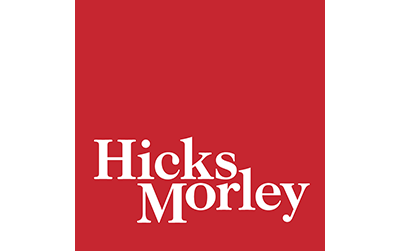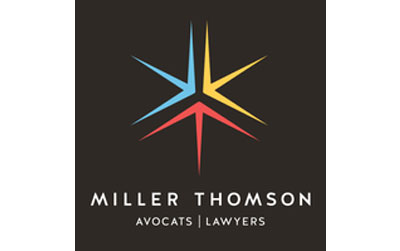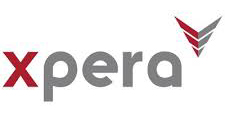
Issue #7 – SEPTEMBER 2023
HR Navigator is published the last Friday of each month

Our theme for September is performance and culture, and as our members and sponsors have pointed out in blogs and newsletter content this month, a high-performing culture requires clear performance expectations, with a structure, processes, and behaviors that support it.
One of the keys to building such a culture is ensuring there is clarity around expectations. Making sure that managers and employees are on the same page when it comes to expectations is necessary to avoiding future frustrations for both parties. An annual performance appraisal and discussion of goals for the coming year is a very helpful tool to ensure expectations are managed and clearly articulated. If employees understand how their personal goals contribute to the broader goals of their team or organization, there is often greater alignment and buy-in.
Expectations should also be fair across the entire team. You can’t have one employee expected to achieve higher goals than another employee. When this occurs, it creates animosity from high performing employees who feel they are doing more than their share of the work.
Fostering a positive culture takes time and requires sustained commitment from the top down. It needs to be a priority for all leaders so employees can see that the organization is actually walking the talk. Open and honest dialogue, alignment around goals and objectives, team work, recognition, and the celebration of successes (both big and small) all help to build a high-performance culture. Ultimately, if an employee is operating in a culture where they feel valued and recognized, is committed to the goals of the team, and feels supported, then they will want to perform; the motivation is intrinsic.
Speaking of high performance, recognition and celebration, I am delighted to share the following updates:
- We just wrapped up our highly successful Fall Conference which was attended by 200 participants from every corner of the province, who benefitted from the knowledge imparted by 17 thought leaders.
- We held our AGM and welcomed 3 new members to our Board of Directors:
- Sarah MacNeil, Human Resources Business Partner, Grey County. Sarah will also hold the Emerging Leader position on the Board.
- Karie Ortgiese, Director Human Resources & Corporate Safety, City of Thunder Bay
- Kathy Weidhaas, Director of Human Resources, City of Waterloo
- We also confirmed the following returning Officers and Directors of the Board for 2023/24:
- President – Lori Bolton, Director of Human Resources, City of Orillia
- Vice-President and Chair, Finance and Sponsorship Committee – Mark Ellis, General Manager, Human Resources Services, City of Guelph
- Vice-President and Chair, Advocacy & Member Services Committee – Jason MacLean, Senior Manager of Client Services, City of Niagara Falls
- Past President – Louise Ann Riddell, Senior Manager, Employee & Labour Relations, City of Mississauga
- Director – Geoff Clarke, General Manager, Corporate Services, City of Cornwall
- Director – Susan Hsiung, Senior Human Resources Consultant, City of Markham
- Director – Jeff Ingram, Manager, Employee Relations, Health, Safety, Wellness and Disability Management, Halton Region
- Director – Danielle Leonard, Human Resources Coordinator, Loyalist Township
- Director – Tracey McKenna, Director of People Services, Town of Caledon
- Director – Jane Parr, Human Resources Director, County of Simcoe
- Director – Amy Smith, Director of Human Resources, Oxford County
- We announced the recipients of this year’s Terry Hallman scholarship:
- Megan Haas
- Ella Brown
- We updated OMHRA’s constitution to reflect the changes to the Ontario Non-Profit Corporations Act and to create “OMHRA 2.0” – an organization that is a leader in modern and effective governance. I would like to thank our Past President, Louise Ann Riddell, for her stewardship of this process.
- And finally, in the spirit of recognition and celebration, I’d like to congratulate Jessica Sousa of Lambton County for having achieved her CMMI HR Specialist designation from the Ontario Municipal Management Institute.
I left our Fall Conference feeling elated about our evolution and excited about what the future holds for our profession and our association. As we head into the final months of 2023, I marvel at how far we have come, and l look forward to what I know we will achieve together in the months and years to come.

Lori Bolton, President

OMHRA’s contribution to Indigenous Reconciliation
September 30th marks Orange Shirt Day and the National Day for Truth & Reconciliation. On this day, we recognize the harmful legacy of Canada’s residential school system and honour the healing journey of survivors and their families.
OMHRA’s Board members recently took part in cultural sensitivity training which deepened their awareness of the history and the harm that was done to the Indigenous peoples in Canada.
As a result of this training, the Board has put in place several initiatives to ensure our Association helps to increase understanding and build relationships with Indigenous people. Over the course of the next three years and beyond, we will also strive to provide education and tools for our members to equip them to support the efforts of municipal governments to create greater social equity.
This includes:
- Develop a land acknowledgement and post in a prominent position on OMHRA’s website.
- Officially begin OMHRA Board meetings with a land acknowledgement to be delivered by a Board member on a rotating basis.
- Create professional development opportunities for members to learn about Indigenous history and such activities as cultural sensitivity training and land learning.
- Invite Indigenous experts to present to OMHRA members at our in-person events and through our webinar series;
- Establish a Community of Practice on Equity, Diversity and Inclusion and invite Indigenous speakers to share information on topics such as what considerations should be top of mind when seeking to recruit Indigenous candidates. This Community of Practice will also allow our members to share examples of their work and learnings to contribute to reconciliation.
- Create a library in the Members Lounge to share information about reconciliation as well as information and resources on speakers, trainers and knowledge keepers.
- Attend Indigenous conferences to continue the education of OMHRA Board members about Reconciliation.
- Review the recommendations of the Truth and Reconciliation Commission to determine other opportunities for OMHRA to contribute to reconciliation.
The Governance and Operational Performance Committee of the Board of Directors has been given oversight of the implementation of these initiatives In order to ensure that OMHRA is — and continues to be — a catalyst for change.

The Intersection of Performance and Psychological Disability
The intersection between performance issues and claims of disability can make performance management quite a complex process for employers.
When an employee claims to suffer from a psychological disability in the face of an investigation into the employee’s performance, one must consider whether the condition identified is in fact a “disability” for the purposes of the Ontario Human Rights Code (“Code”). Having one’s performance scrutinized naturally generates a level of stress and anxiety. Therefore, it is common for employees to claim they are suffering from stress once a performance issue has been identified. In such a situation, employees may even cease reporting to work as a result of the alleged stress they are experiencing.
A bare assertion that the employee is a person with a disability is not sufficient to establish a psychological disability. For example, workplace stress resulting from an employer investigating alleged performance problems, or from a problematic relationship with a supervisor, is not alone sufficient to constitute a disability for Code purposes. However, such an assertion does create an onus on an employer to make further inquiries to obtain information as to whether an employee has a disability requiring accommodation. Once the employer knows that the employee may have a psychological disability requiring accommodation, the employer should request medical information regarding:
(a) the nature of the illness;
(b) whether the disability is permanent or temporary, and the employee’s prognosis;
(c) the restrictions or limitations flowing from the disability;
(d) the basis for the medical conclusions; and
(e) the treatment of the disability, including medication (and possible side effects) which may impact on the employee’s ability to perform his or her job duties and interact with others.
This type of information is essential to both provide evidence of the employee’s disability and to assist the employer in meeting its duty to accommodate, if a disability is substantiated.
The fact that an employee has a disability does not eliminate the employer’s right to discipline that employee in appropriate circumstances. Once the employer has obtained sufficient medical documentation substantiating a psychological disability, it must consider whether the employee’s medical condition is the cause of the employee’s poor performance. If there is no causal link, the employer may discipline the employee for poor performance. However, there may be circumstances in which the employee’s misconduct is considered culpable, but the employee’s psychological disability is viewed by an adjudicator as a factor which mitigates the disciplinary penalty.
In the event the medical evidence substantiates a causal link between the disability and the employee’s performance issues, the employer must consider whether it can accommodate the employee (which may assist in improving performance) up to the point of undue hardship. In considering whether accommodating the employee would cause undue hardship, the following factors are generally considered by adjudicators: cost, outside sources of funding, safety, size of organization, interference with rights of other employees and employee morale. Employers must keep in mind that undue hardship is a difficult standard to meet. The employer must be able to show that it considered whether modifications could be made to the employee’s position, and if not, whether there is other work the employee can perform, either with or without modifications. The employer must be able to establish that it canvassed all work available in the workplace.
Only through such inquiry as noted above will the employer be able to determine whether the employee’s performance issues are causally related to a psychological disability and, thus, whether the employee’s poor performance is culpable or not. In any event, the employer must consider whether the disability will be viewed as a mitigating factor. This process is also necessary to determine what, if any, accommodations may be required to assist the employee in improving their performance.
While these principles are helpful in guiding the disability and accommodation process generally, every situation requires an individualized approach based on its own facts. If you are dealing with a novel or particularly sensitive situation, it may be helpful to speak with a Hicks Morley lawyer to ensure you are appropriately addressing the issue at hand.

Reduce Employee Stress and Conflict through Clear Expectations
When we conduct workplace assessments, lack of clarity of expectations about roles, responsibilities, and performance is often one of the top areas of concern in workplaces that have a negative culture or where workplace conflict is prominent. While employees do not like ‘micromanagers’ they equally do not perform well if there is lack of clarity of roles and responsibilities. The National Standard of Canada for Psychological Health and Safety in the Workplace (the “Standard”) recognizes Clear Leadership and Expectations as one of the 13 Factors affecting psychological safety and health. According to the Standard, Clear Leadership and Expectations is present “in an environment in which leadership is effective and provides sufficient support that helps workers know what they need to do, explains how their work contributes to the organization, and discusses the nature and expected outcomes of impending changes.”
When expectations are clearly established and communicated in the workplace, employees not only know what they need to do but also have a way of knowing whether they are meeting expectations, and they understand why those expectations have been established. When these factors are lacking, the result is uncertainty which can lead to decline in trust, resiliency, and employee morale as employees feel stressed and sometimes powerless. Lack of clarity of expectations can also fuel conflict between employees, and between employees and leaders because employees experience stress, irritability, and nervousness leading to greater opportunities for conflict. Lack of clarity of expectations is also often tied to ineffective communications, which is another key source of conflict. It is therefore not surprising that lack of clarity of expectations is a prominent factor in workplace assessments and employee engagement surveys that reflect negative workplace culture. If you want to improve your workplace culture, and support and promote psychological safety and health in your workplace, you need to ensure that expectations are clearly established and communicated.
How do you know if you are setting and communicating expectations clearly? According to Mindscount , an organization with clear leadership and explicit expectations would see that:
a) in their jobs, workers know what they are expected to do;
b) leadership in the workplace is effective;
c) workers are informed about important changes at work in a timely manner;
d) supervisors provide helpful feedback to workers on their expected and actual performance; and
e) the organization provides clear, effective communication.
If you want to improve the likelihood of employees meeting expectations, and provide the certainty that goes along with clear expectations, try to follow these steps:
- Determine your expectations of employees and teams before you communicate them to others. You cannot be clear with others about your expectations unless you are clear with yourself. Think about what meeting expectations would look like.
- Minimize confusion by making expectations easy to understand and apply and communicating them clearly and consistently. Employees cannot meet expectations they don’t understand. Support written communication with in-person discussion whenever possible and entertain questions and feedback to promote ‘buy-in.’
- Let employees know why your expectations are important to the organization. When employees understand why expectations of them are important, they are more likely to meet them.
- Provide examples of why the expectations matter to help employees connect their role to the overall organization.
- Obtain agreement and commitment to the expectations from all to support accountability.
Setting and communicating clear expectations will improve and support employee morale, performance and loyalty, and will have a positive impact on workplace culture by reducing sources of stress and conflict. It is well worth the time and effort.
OMHRA Member Spotlight
Gary Filiatrault
HR Business Partner
The Corporation of the County of Essex
OMHRA Member since February 2022
 What are three adjectives your colleagues would use to describe you?
What are three adjectives your colleagues would use to describe you?
- Passionate
- Visionary
- Trustworthy
If you had to state your three rules of engagement, what would they be?
-
Assume positive intent and nothing else – doing this will silence the negative inner voice
- Be present – the impact it has on those in your presence is incalculable
- Speak your truth and debate during meetings, present a united front after – the time for debating an approach is behind closed doors, once a path forward has been decided that’s the path we travel… together.
Did you have an important early influencer in your life? Could you reflect on their role in shaping you and perhaps preparing you to be a resilient leader?
I know this question asks about an early influencer, but to be honest, it would be very difficult to narrow the list of people that have had a profound impact on me as a person, a colleague and a leader, to just one. I have had so many wonderful people (Family Members, Teachers, Friends, Coaches, Colleagues, Leaders) in my life that have provided me with guidance, sound advice and directional wisdom. I believe that every person that I have had the fortune of knowing has shaped who I am. I wish to thank each and everyone of them.
What advice do you have for people just beginning their careers in human Resource Management?
The best advice I have to offer someone starting their HR career would be:
- You are in charge of your career;
- Finding the right mentor is extremely important;
- Be open to feedback, criticism and advice; and,
- Remember that every mistake is an opportunity to improve.
What may surprise your colleagues about you?
Nothing. There is nothing I could say that would surprise my colleagues about me. I feel like I could tell them that I’m Batman and they would say, “of course you are”.
Do you have a hobby or non-work-related activity that you think enhances your effectiveness at work?
I think that everything I do outside of work (golf, softball, yoga, engaging with my wife and children and friends) helps me be the best version of myself at work.
What is your favourite quote?
“Be curious, not judgemental” – (Not) Walt Whitman
What is your favourite work of fiction?
Dean Koontz’ “The Good Guy”
What book on human resource management should every practitioner read?
I hope it’s okay, but I am going to turn this question on its head a little bit and say that I believe that every practitioner should immerse themselves in any media enables them to be learning and growing. Right now, I can’t get enough of Simon Sinek or the algorithm that I have tailored for myself on my socials.
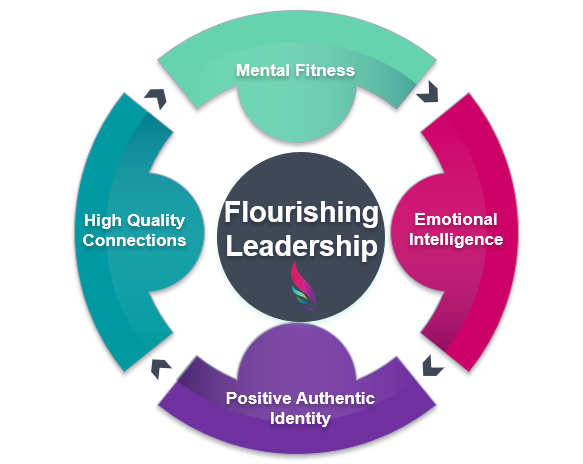
Flourishing Leadership: The Solution to Managing Performance Expectations While Elevating Employee Wellbeing and Building a Positive Culture
Organizations face several pressing challenges today and employee burnout, disengagement, and performance gaps are among the top concerns.
In the dynamic landscape of modern workplaces, there’s an unmistakable connection between employee wellbeing and performance expectations. A workforce that thrives is one that consistently meets and even surpasses organizational goals. But how can organizations foster such an environment of flourishing, where employees not only excel but also experience personal growth and fulfillment? The answer lies in Flourishing Leadership, a paradigm that has the power to transform organizational culture, align values, and elevate both individual and collective potential.
In essence, a healthy, flourishing employee is better equipped to meet and exceed performance expectations. They are more resilient, adaptable, creative, and driven. Therefore, fostering employee wellbeing should not be viewed as separate from achieving high performance. Instead, it is the foundation upon which exceptional performance is built.
Flourishing Leadership is a transformative approach that puts wellbeing at the forefront of organizational culture. It encompasses principles from positive psychology, authentic leadership, and growth mindset. Leaders who adopt this paradigm prioritize the holistic development of their teams, creating an environment where individuals can thrive personally and professionally. Here’s how Flourishing Leadership impacts the connection between employee wellbeing and performance expectations:
Promotes a Growth Mindset: Flourishing leaders encourage their teams to embrace challenges as opportunities for growth. This mindset shift fosters resilience and adaptability, enabling employees to tackle performance expectations with confidence.
Prioritizes Mental Fitness: Leaders that recognize the significance of mental fitness equip themselves and their employees with tools to manage unhelpful thought patterns, stress, and motivation, ensuring a mentally resilient workforce.
Enhances Emotional Intelligence: Flourishing leaders understand the importance of emotional intelligence. They create a safe space for employees to navigate their emotions, reducing stress and anxiety while enhancing overall wellbeing.
Cultivates Authentic Identity: Flourishing leaders help team members uncover their authentic identities, aligning personal values with organizational goals. This alignment boosts motivation and commitment, driving performance excellence.
Builds Quality Connections: Flourishing Leadership emphasizes the importance of high-quality connections within teams. When colleagues trust, support, and collaborate with each other, performance expectations become realistic and achievable.
Celebrates Achievements: Flourishing leaders celebrate both individual and collective successes. This recognition fosters a positive work culture and motivates employees to consistently meet and surpass performance expectations.
The Impact on Organizational Culture
Flourishing Leadership fundamentally changes the organizational culture. It shifts the focus from merely meeting performance targets to creating an environment where employees flourish and are intrinsically motivated to excel. It transforms workplaces into nurturing environments where employee wellbeing and high performance go hand in hand. Here are some key elements of this transformation:
Increased Engagement: Employees under Flourishing Leadership are more engaged and committed to their roles. They find meaning in their work, resulting in higher productivity and a deeper connection to the organization’s mission.
Stronger Resilience: Flourishing leaders equip their teams with resilience-building skills. This resilience not only helps employees cope with challenges but also fuels their determination to meet performance expectations.
Enhanced Creativity: Wellbeing and a growth mindset foster creativity and innovation. Flourishing employees are more likely to think outside the box, contributing fresh ideas and solutions to organizational challenges.
Improved Retention: Organizations that prioritize wellbeing through Flourishing Leadership tend to have lower turnover rates. Employees feel valued and supported, leading to a desire to stay and grow within the organization.
Higher Trust Levels: Flourishing leaders prioritize trust and open communication. This trust permeates the organization, creating an atmosphere where employees feel comfortable expressing their ideas and concerns.
Sustainable Success: Perhaps most importantly, Flourishing Leadership fosters sustainable success. It goes beyond short-term gains and focuses on long-term growth, ensuring the organization’s continued prosperity.
Flourishing Leadership has the potential to revolutionize organizational culture, bridging the gap between employee wellbeing and performance expectations. By nurturing the holistic development of individuals, organizations can create environments where both employees and the organization itself flourish, driving sustainable success and lasting positive change.
As you reflect on the symbiotic relationship between employee wellbeing and performance expectations, consider the role of leadership in shaping your organization’s culture. Embrace the principles of Flourishing Leadership to unlock the full potential of your team and foster a workplace where wellbeing and high performance are not mutually exclusive. Introduce development opportunities for leaders to become champions of Flourishing Leadership and catalyze positive change within your organization. The journey toward a flourishing workplace begins with a single step – are you ready to take it?

Workplace Culture: The Importance of Addressing Bias and Toxic Employees in the Performance Evaluation Process
The value of a positive workplace culture in all sectors, including the municipal sector, cannot be underestimated. Culture is directly related to attrition rates, employee engagement, productivity, and employer reputation. Many factors affect workplace culture. One important factor is the performance evaluation process. An evaluation process that does not recognize the unique and varied ways that employees can contribute to the workplace ultimately will have a negative impact on the workplace. This article describes two common shortcomings in performance evaluations and how they can be rectified to promote a healthy workplace culture.
Gender and Racial Bias
One shortcoming is bias in performance evaluations. Performance evaluations are intended to be merit-based. However, studies have shown that unconscious bias too often influences how managers rate employees, resulting in women and people of colour having to meet different standards than their male and white colleagues to advance professionally.
Gender biases are most commonly seen in evaluations of employees’ personalities and future potential. Managers often perceive the same behaviours differently based on whether a man or woman engages in them. Critical reviews of female employees commonly include words like, “abrasive”, “bossy”, and “emotional”, but men are rarely viewed in this light. These differences in interpretation of behaviours stem from expectations of the social roles that men and women play. A take-charge attitude at work earns men positive performance reviews, but this characteristic is not as highly valued in women. While exhibiting competence and confidence does not hurt female professionals, openly engaging in debate or pursuing positions of power often evokes negative reactions from managers. Women are viewed more favourably for having a “likable” personality.
Racial bias is often exemplified by managers subjecting employees from minority racial groups to a “prove it again” mentality in performance evaluations. Studies suggest that the mistakes made by these employees are noticed more and remembered for longer than mistakes made by white employees. Furthermore, employees from minority racial groups typically receive far less constructive feedback and fewer mentions of leadership potential in their performance evaluations.
These performance evaluation differences hinder employee morale and negatively affect workplace culture. In order to invest in the municipal workplace culture, these need to be rectified so that all employees feel that there is a level playing field in the workplace.
Toxic High-Performing Employees
The second shortcoming is that performance evaluation processes often make it difficult to assess high-performing employees who may be toxic to the workplace culture. Evaluations that prioritize productivity over behaviour may fail to recognize the impact that a toxic employee has on the rest of the team. In some instances, employers may be aware of inappropriate conduct but have no mechanism, or desire, for reprimanding toxic behaviour when an employee’s work product meets or exceeds expectations. When bad behaviour arises, employees look to managers and supervisors to uphold the cultural norms of the organization and protect their psychological safety. Confidence and trust in management erodes when this is not done.
Improving the Performance Evaluation Process
Employers are encouraged to consider these issues and how they can mitigate them in the performance evaluation process to improve workplace culture. The starting point for employers is to clearly define their performance evaluation processes. This includes deciding exactly which criteria to assess, what each of those criteria means, and how they will be applied consistently across all employees. When doing so, the employer should involve large groups of managers and supervisors. Having a diversity of voices reduces chances for individual biases to affect an evaluation. Diversity training for management further helps confront implicit biases and raise consciousness of language used.
The performance evaluation process should strive for optimal transparency. Employees should be able to easily access their performance data and past feedback. Managers and supervisors should be held accountable for their reviews. Mechanisms can also be established for employees to give anonymous feedback about management.
Finally, behavioural expectations must be part of the evaluation. It is essential to take immediate remedial action with a toxic employee, regardless of productivity and performance. There should be zero tolerance for egregious behaviour against co-workers. Measurable behaviour change should occur within a reasonable time frame after discussion with an employee. Employers can consider providing support to employees impacted by toxic behaviour.
The key to developing a consistent, positive workplace culture is ensuring that core organizational values are integrated into every aspect of the business, including performance management. By assessing and modifying performance evaluation processes to address gender and racial bias as well as toxic employees, municipal employers can work towards making their workplace a healthier environment for all employees.
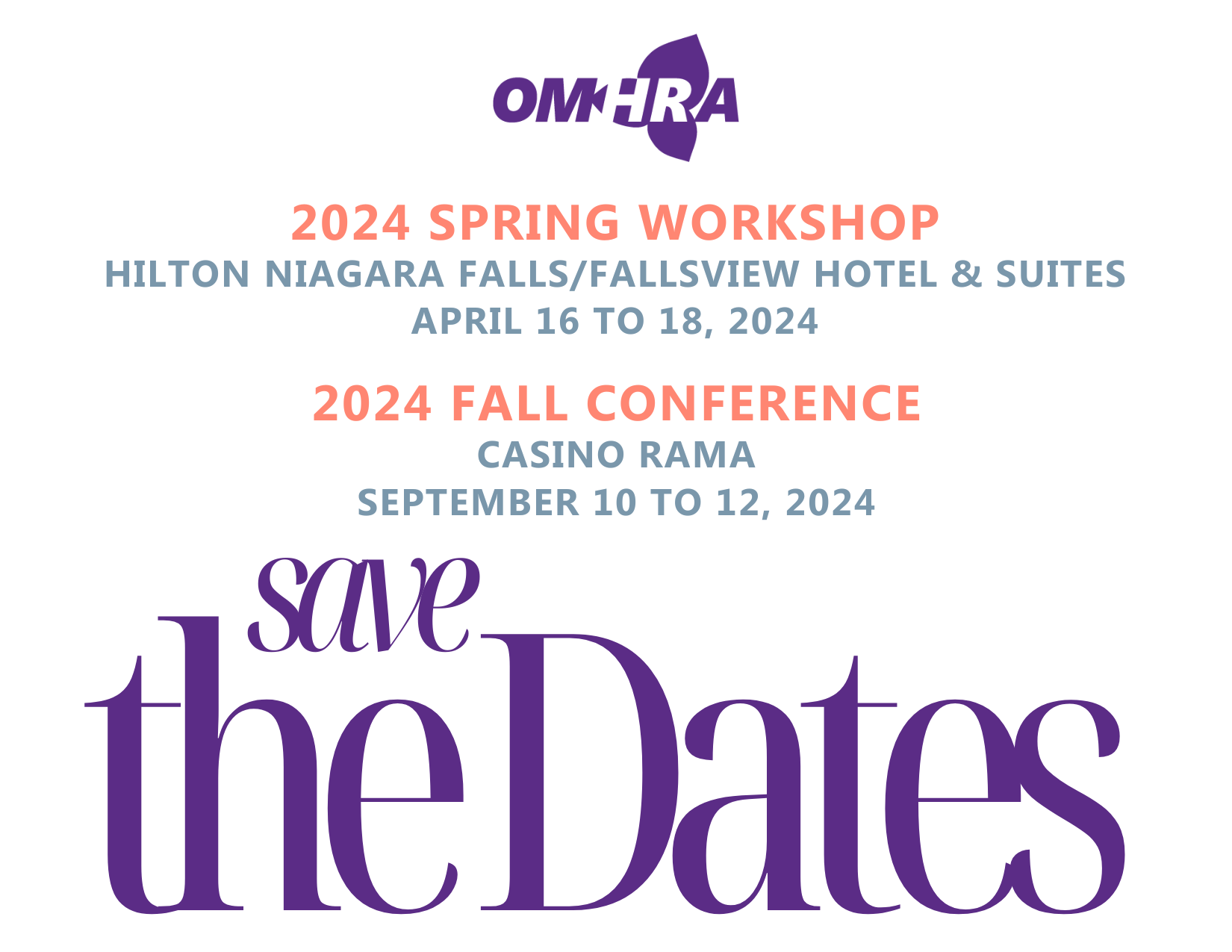

Make workplace conflict more manageable
Leverage the insight of an independent workplace investigation
Conflict in the workplace can arise due to harassment, bullying, abuse of authority, discrimination or a variety of other reasons.
To address and resolve the situation, it’s imperative that an impartial investigation takes place.
One way to ensure that it’s as objective as possible, is by contracting an experienced, independent firm to conduct the enquiry.
How an independent firm ensures an equitable investigation
The aim of an independent investigator conducting a workplace enquiry is to gather information in an unbiased manner. This allows them to develop an understanding of the workplace’s culture and related dynamics so they can identify the root cause(s) of the conflict and issues.
The integrity of a workplace investigation must always be preserved. To do this, the investigator approaches the investigation with an open mind and without predeterminations regarding the complainant or situation. They also ensure procedural fairness by following all employer policies and procedures. Most importantly, the confidentiality and privacy of all parties involved is guarded to protect against potential retaliation toward the complainant, respondent, witnesses and others.
When the investigation is complete, the investigator will provide a thorough report. It will summarize the relevant documents and evidence reviewed, the interviews conducted, and present the findings in an objective, unbiased, fact-based manner to ensure they will stand up to any scrutiny.
What you’ll need to provide the investigator
To carry out a comprehensive investigation, an investigator will require detailed information regarding the incident. This includes an outline of the issues that led to the investigation, and the exact nature of the incident.
Supporting documentation is also necessary. Here’s what you’ll need to provide the investigator:
- Workplace Harassment and Violence policies
- Respectful Workplace policies and Code of Conduct policies
- Collective Agreement information (if applicable)
- Company complaint process
- Names, roles and contact Information of the involved parties
- Employment details of all parties involved
- Incident reports
- Written statements and/or complaints
- Written witness accounts
- Responses made by management and/or legal counsel if any
- Documentation relating to previous incidents of potential relevance
- Video recordings
- Access to control data and any other relevant digital evidence
- Specific instructions on how to engage the parties
The investigator may also request to review locations and sites that are deemed relevant to the investigation.
The 7 steps of a workplace investigation
- Consultation with point of contact
After reviewing the supporting documents, the investigator will consult with the client point of contact to get an understanding of the work environment in which the investigation is taking place. In addition, letters will be sent to the complainant(s) and respondent(s) to confirm that an investigation is underway and they will be contacted to arrange an interview. - Interview of complainant(s)
The complainant(s) will be asked by the investigator to recount the incidents and/or ongoing actions or behaviour that are the basis for their allegation(s). The interview is recorded in the event the investigator’s account of an interview is later questioned. - Interview of witnesses
Witnesses will be asked by the investigator to provide their recollection of the incidents and/or ongoing behaviour, and to comment on any other relevant behaviour of concern on the part of the respondent(s). - Interview of respondent(s)
Respondents will be asked by the investigator to provide their recollections and interpretation of the alleged behaviour and incidents that are the reason for the allegations. - Additional interviews
If new information comes to light the investigator may need to interview additional witnesses or conduct follow-up interviews with the complainant(s), previous witnesses and/or respondent(s). - Generation of findings
The investigator reviews the documents supplied and the content gathered via the interviews to determine the factual findings of their investigation. - Creation and presentation of the report
The report will summarize the documents and evidence reviewed, the interviews conducted, and the findings of the investigation. Once the report is complete the report is presented by the investigator to the client representative.
An independent workplace investigation gives you peace of mind
Having to deal with a workplace conflict is never easy. The well being of those involved and, potentially, their employment is on the line. Knowing that whatever decision you make is based on the findings of an independent and unbiased workplace investigation will allow you to feel confident you have taken the right course of action.
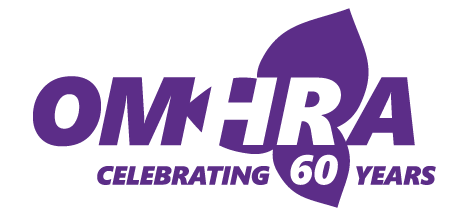
Table of Contents
- 1
- 2
- 3
- 4
- 5
- 6
- 7
- 8

